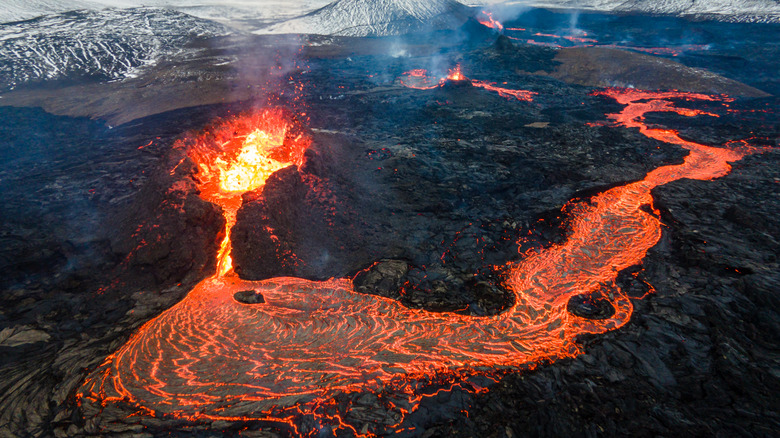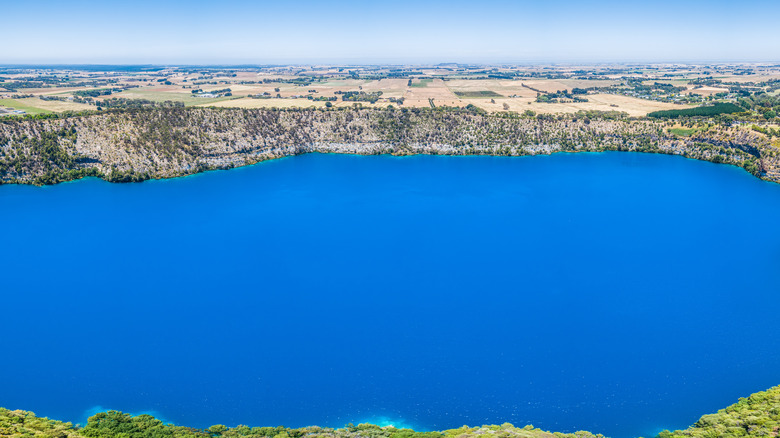Here's Why Maar Volcanoes Are Different From Other Types
Volcanoes are perhaps the most frightening of all the natural disasters the planet has up its spherical sleeves. There's something awe-inspiring and terrifying about the mere idea of them. The fury of Mount Vesuvius devastating the ancient city of Pompeii — which it did on August 24, 79 CE, per Britannica, covering the city in a layer of ash and pumice that was nine feet deep– is a mental image that's just impossible to shake.
The tragic denizens of the ancient city did not even have a word for volcano. According to ABC News, the word comes from the name of the island Vulcano, near Sicily, Italy. Supposedly, this was believed to be the place where Vulcan, the fiery Roman blacksmith god, plied his flaming trade.
As National Geographic reports, volcanoes exist on land, under the ocean, on planets, and on moons alike. The size and intensity of a volcanic eruption vary widely, from a slow and steady flow of lava to eruptions of tremendous force (History reports that the force of Krakatoa's infamous 1883 eruption was comparable to a quantity of TNT weighing 200 megatons). Maar volcanoes, in particular, are especially unusual.
The mysterious maar
Per Geology, a maar volcano forms when magma (before it arrives above ground and becomes known as lava) meets groundwater below the Earth's surface. The result is an enormous eruption of steam, or sometimes several. This tears the surrounding ground asunder and blasts it into the air, forming a great crater that can be up to 300 meters deep and 8000 meters wide. The maars in Alaska's Espenberg volcanic field reach these dimensions, distinguishing them as the biggest on the planet.
Such craters are actually quite common, if not usually as large. Around the world, Geology explains, the only volcanic structure more numerous is the cinder cone. Frequently, lakes form within maars. Though the falling material does fill in the area around the crater as it lands, it usually doesn't form the kinds of mountainous pile-up that some would consider a more traditional volcano. As a result, maars are rather unique.
Live Science adds that the rocky crater left behind by a maars explosion is known as a diatreme, or a maar-diatreme volcano. As powerful as they can be, their effects aren't usually widespread. Most intriguing of all, they may be the key to aiding in the discovery of diamonds. Greg Valentine, a geology professor at New York's University of Buffalo, reported to Live Science that such diatremes can be formed from kimberlite, some of the planet's deepest-found magma. Many crystals, including the most precious, are found in kimberlite rock when it solidifies.

